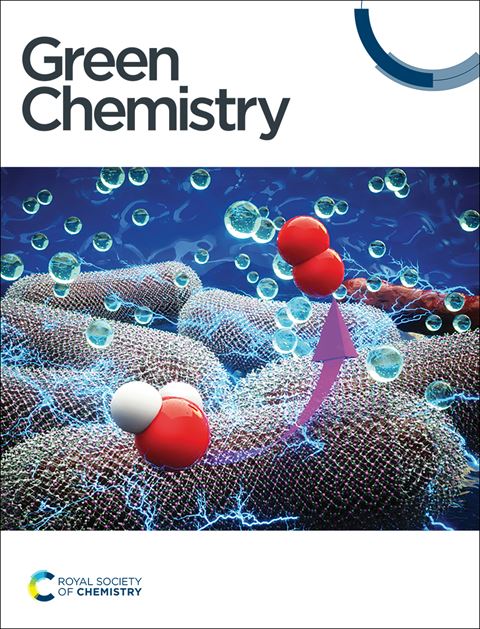Site-selective electrochemical synthesis of nitrogen-enriched bis-pyrazole derivatives: a sustainable approach for N–N versus NN bond formation†
IF 9.3
1区 化学
Q1 CHEMISTRY, MULTIDISCIPLINARY
引用次数: 0
Abstract
Two bis-pyrazole derivatives with azo (NN) and dinitrogen (N–N) linkages were synthesized through an electrochemical homo-coupling process, starting from 3,5-diamino-4-cyanopyrazole. Through systematic optimization of electrochemical conditions and electrolytes, we achieved site-selective coupling at the amino or pyrazole nitrogen sites, yielding azopyrazole derivative and N–N homo-coupling product . This selective synthesis resulted in high yields of up to 86% for NN bond formation and 78% for N–N bond formation. Cyclic voltammetry studies and radical trapping experiments revealed the critical involvement of amino radicals in the coupling reactions, providing new mechanistic insights. The nitration product of the azo-pyrazole compound exhibits promising detonation properties. This research not only expands the scope of electrochemical synthesis techniques but also offers valuable insights into the reactivity of diverse nitrogen centers within aminopyrazole frameworks. This method presents a potential strategy to enhance the efficiency of synthesizing nitrogen-rich heterocyclic molecules, which are essential in various industrial and technological applications.

求助全文
约1分钟内获得全文
求助全文
来源期刊

Green Chemistry
化学-化学综合
CiteScore
16.10
自引率
7.10%
发文量
677
审稿时长
1.4 months
期刊介绍:
Green Chemistry is a journal that provides a unique forum for the publication of innovative research on the development of alternative green and sustainable technologies. The scope of Green Chemistry is based on the definition proposed by Anastas and Warner (Green Chemistry: Theory and Practice, P T Anastas and J C Warner, Oxford University Press, Oxford, 1998), which defines green chemistry as the utilisation of a set of principles that reduces or eliminates the use or generation of hazardous substances in the design, manufacture and application of chemical products. Green Chemistry aims to reduce the environmental impact of the chemical enterprise by developing a technology base that is inherently non-toxic to living things and the environment. The journal welcomes submissions on all aspects of research relating to this endeavor and publishes original and significant cutting-edge research that is likely to be of wide general appeal. For a work to be published, it must present a significant advance in green chemistry, including a comparison with existing methods and a demonstration of advantages over those methods.
 求助内容:
求助内容: 应助结果提醒方式:
应助结果提醒方式:


